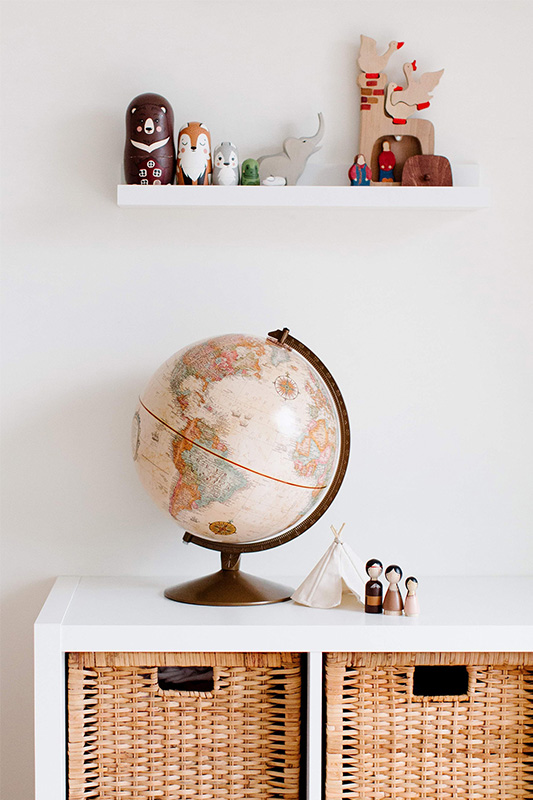Blog
Moving Guide: Your Friendly Companion for a Stress-Free Relocation

Planning Your Move
Planning your move is a key step in making the process smooth and stress-free. You need to make important decisions about how to move, set a budget, choose a date, and find the right moving company.
Choosing Between Professional and DIY Move
Deciding whether to hire professional movers or do it yourself can be tough. Here are some factors to consider:
- Time: If you have a busy schedule, hiring professionals can save you a lot of time. They handle the heavy lifting and packing.
- Cost: A DIY move may seem cheaper, but consider costs like truck rentals, fuel, and supplies.
- Help: Do you have friends or family who can help you? A strong support team can make a DIY move easier.
- Distance: For long moves, professionals might help reduce stress and ensure everything arrives safely.
Think about what works best for your situation.
Setting a Moving Budget
Creating a budget is essential to keep your move on track. Start by listing all potential expenses. Here are some common costs to include:
- Moving Company Fees: Get quotes from different moving companies to find the best deal.
- Packing Supplies: Boxes, tape, and bubble wrap can add up, so plan for these costs.
- Travel Costs: Factor in gas, meals, and lodging if your move covers long distances.
- Insurance: Consider extra coverage for valuable items during transit.
Make sure to leave some space in your budget for unexpected costs!
Selecting a Moving Date
Choosing a moving date can influence your costs and stress levels. Here are some tips:
- Season: Summer is busy for movers. Opt for spring or fall for better rates and availability.
- Day of the Week: Weekdays are often cheaper than weekends. If you can, schedule your move on a Tuesday or Wednesday.
- Advance Planning: Try to set your date a few months in advance. This allows you to secure a good moving company and prepare properly.
Mark your calendar and ensure all preparations are in order!
Comparing Moving Companies
Finding the right moving company is crucial for a successful relocation. Follow these steps to compare options:
- Research: Look for reviews and ratings online. Ask friends or family for recommendations.
- Obtain Quotes: Reach out to several companies for estimates. This helps you understand the market rate.
- Check Services: Some companies offer packing, storage, and other services. Decide what you need.
- Verify Insurance: Confirm the company has the necessary insurance to cover potential damages.
By comparing options, you can choose a company that fits your needs and budget.
Decluttering and Downsizing
As you prepare for your move, decluttering and downsizing can make the process smoother. By sorting, donating, and deciding what to keep, you can save time and stress on moving day. Here are some effective strategies to help you.
Sorting and Donating Unwanted Items
Start by going through each room in your home. Create three boxes labeled Keep, Donate, and Trash.
- Keep: Items you use regularly or have sentimental value.
- Donate: Items in good condition that you no longer need. Consider local charities or shelters.
- Trash: Broken or unusable items that cannot be repaired.
Try to stay focused while sorting. If you’re unsure about an item, ask yourself if you’ve used it in the last year. If not, it may be time to let it go. Donating helps others and lightens your load for the upcoming move.
Hosting a Garage Sale
If you have a lot of items to sell, hosting a garage sale can be a fun way to declutter. Start by gathering items you no longer need but are still valuable. Next, set a date and advertise your sale on local community boards or social media.
On sale day, arrange items on tables for easy browsing. Consider bundling similar items to encourage sales. Make sure to price items fairly; remember, the goal is to sell! Having some change on hand will also be helpful. This not only helps you declutter but can earn you extra cash for your move.
Using Storage Units for Extra Belongings
Sometimes, you may not be ready to part with certain items. A storage unit can be a great solution.
Before renting a unit, think about what you might need in the future.
- Seasonal items: Holiday decorations or winter clothes.
- Family heirlooms: Sentimental items you want to keep safe.
- Hobby supplies: Equipment that you don’t use daily.
Choose a unit that fits your needs, and make a plan for what goes inside. Be sure to label your boxes clearly so you can find things easily later. This way, you can keep your new space organized while holding onto things that matter.
Packing Essentials and Organization
Getting organized before you pack is key to a smooth move. Focusing on the right supplies, protection methods, and labeling systems will help you stay on track. Let’s dive into what you need to make your packing process easier.
Gathering Packing Supplies
Before you start, gather essential packing materials. You’ll need:
- Sturdy boxes: These come in various sizes for different items.
- Cargo Straps: Strong strapping to tie your boxes securely.
- Utility knife: Handy for cutting tape and opening boxes.
- Bubble wrap and packing paper: To protect fragile items.
You can find boxes at local stores or use ones from deliveries. Collect enough so you’re not scrambling last minute. Remember, labeling boxes with their contents helps during unpacking.
Protective Materials and Techniques
To keep your belongings safe, use protective materials. Bubble wrap is excellent for delicate items like glassware and electronics. Wrap these items individually for better protection.
Packing paper works well for less fragile items but can also cushion heavier items. Layer items inside boxes, placing heavier ones on the bottom and lighter ones on top.
Consider using wardrobe boxes for clothes. They allow you to hang clothes directly, saving space and reducing wrinkles. Ensure furniture pieces are wrapped in moving blankets to prevent scratches and damage.
Labeling and Inventory System
A strong labeling system makes your moving day easier. Clearly label each box with its content and the room it belongs to. Use a permanent marker for visibility.
Create an inventory list to track all your boxes. Number your boxes and list their contents beside their number on your inventory sheet. This way, you can quickly locate items when you arrive at your new home.
Consider using color-coded labels for each room. For example, blue for the kitchen and red for the living room. This helps movers know exactly where each box belongs, making unpacking a breeze.
Logistics and Transportation
When planning your move, understanding logistics and transportation is key. You want to ensure that everything goes smoothly, from choosing the right moving vehicle to arranging your stay during the transition. Let’s explore how to make these arrangements effectively.
Arranging Moving Trucks or Moving Pods
Choosing the right moving vehicle is crucial for your move. You can opt for moving trucks or moving pods, depending on your needs.
Moving Trucks: These are great for local moves. You can rent them for a few hours or a full day. Consider the size you need. U-Haul and Penske offer various options.
Moving Pods: If you prefer a more flexible option, moving pods are worth considering. They are delivered to your location, and you can load them at your own pace. You can keep them on-site or have them moved to your new home later.
Make sure to compare costs and availability for both options.
Coordinating with Moving Services
Working with moving services can simplify the process. They handle logistics for you, allowing you to focus on other aspects of your move. Start by researching local moving companies. Look for reviews and ratings. Schedule a visit for an estimate. This will help you understand the cost and services offered.
Key Services: Many companies provide packing, loading, and unloading. Ask about additional services like storage in case you need it temporarily.
Don’t forget to confirm the date and time of the move. Clear communication with your chosen service is essential to avoid last-minute surprises.
Travel and Temporary Housing Arrangements
If your move involves some distance, consider travel and temporary housing arrangements. This will ensure a smooth transition to your new home.
Travel Plans: Depending on the distance, you might need to book flights or plan for a road trip. Factor in any hotel reservations if required.
Temporary Housing: Look for short-term rentals or hotels near your new area. Websites like Airbnb and Expedia can help you find suitable options.
Ensure you have all accommodation details confirmed before moving day. This reduces stress and uncertainty during your relocation.
Preparing for Moving Day
Preparing for moving day can help you feel more organized and less stressed. There are important details to finalize, essential items to pack, and ways to supervise the move to ensure everything goes smoothly.
Finalizing Details
Before moving day arrives, check off your final details. Confirm the moving date and time with the moving company. Make sure they have the correct address and any special instructions.
It’s wise to call your utility providers to schedule disconnection at your old home and set up connection at your new one. Create a list of important phone numbers—like family, friends, and your movers—to keep handy.
Additionally, ensure all your important documents are organized. Keep them in a folder that is easy to locate on the big day. Double-check that all items are packed and labeled clearly.
Build a home theater that combines comfort and cutting-edge tech. Optimize acoustics, select a big screen, and create the ultimate movie-watching environment.
Moving Day Kit Essentials
Creating a moving day kit can help keep you prepared. Pack essentials that you will need right away. Here’s a handy list to include:
- Snacks: Keep energy up with some quick snacks like granola bars.
- Water bottles: Staying hydrated is key.
- First aid supplies: Accidents can happen, so have a small kit ready.
- Tools: Include screwdrivers, box cutters, and tape.
- Chargers: Don’t forget chargers for your devices.
Having these items ready will make your day easier and reduce the chances of last-minute scrambling for supplies.
Supervising the Move
On moving day, your role as a supervisor is important. Start by greeting the moving team when they arrive. Provide them with a quick tour of what needs to be loaded. Make sure to communicate any special instructions clearly. If you packed boxes that need extra care, point those out.
Stay available to answer questions or solve any problems that come up. This way, you can ensure everything runs smoothly. As the day progresses, take brief moments to check that items are being handled properly and loaded according to your plan. Visit DeCasa Collections for more information.

















